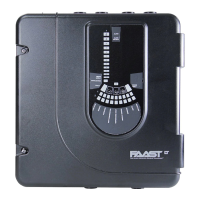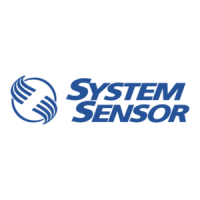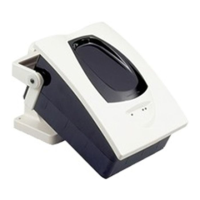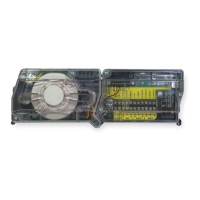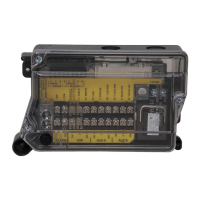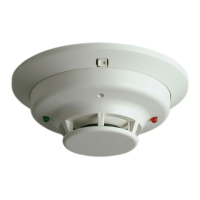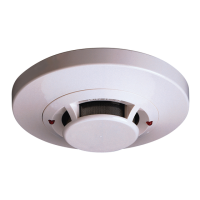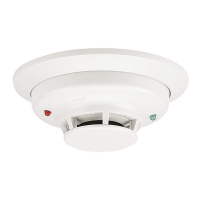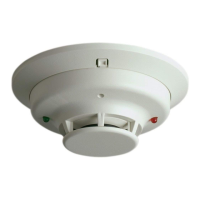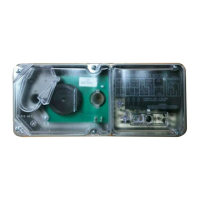Password Sequence to Enter Maintenance Mode Filters
Periodic cleaning or replacement of the lters will be required.
The lters are located inside the cabinet at the top of the unit (see
Figure 9 displayed earlier in the guide) and are removed as shown in
the sequence below:
Either replace the lter assembly or carefully brush o the accumulated
dust. (Replacement lter part number: FL-IF-6.)
Note: If replacing the lter, remove the foam gasket from the old lter
and place onto the new lter. When placing the new lter into the slot,
ensure that the gasket is correctly aligned.
Ret the lter, close and secure the cabinet door. The unit will initialise
and restart.
Smoke Sensors
The smoke sensors are located under the sensor cover (see Figure
9 displayed earlier in the guide). To access the sensors, follow the
sequence below:
1
2
3
1
2
3
FOAM GASKET
4
The Default Password is 3111.
If no button is pressed for 10s during the password sequence, the unit
returns to Normal mode.
Exit from Maintenance Mode
press the three front panel user interface buttons TEST, RESET and
DISABLE simultaneously for 2 seconds.
Alternatively, reset the unit using the Remote Input (when set to
default value) or power the device o and on again.
If there is no activity in Maintenance mode for 5 minutes (default), the
FAULT indicator blinks green for 15s and then the unit automatically
returns to the Normal state.
TESTING
Magnet Test
The alarm signalling can be tested for functionality by placing a test
magnet in the position shown in Figure 9 (displayed earlier in the
guide). This method does not reect EN54 standards and does not
test the air ow in the pipe-work.
Smoke Testing
The system alarm response can be tested for functionality using
smoke. The choice of smoke source is dependant on the installation
but in all cases the smoke must be present for the duration of the test.
Smoke pellets or matches can be used close to the sampling point to
introduce smoke particulates into the system. It is recommended that
smoke with a particulate life cycle of greater than 120s should be used
– standard aerosol sprays for point detector testing do not work well
on aspirated systems.
Fault Testing
Simulate a fault on the detector (for example, block the outlet pipe) and
check that a fault is signalled on both the front panel of the unit and at
the CIE (Fire Panel).
SERVICE
WARNING
Isolate the aspirating detector from the re alarm system to prevent any
unwanted alarms when opening the front door of the unit. Make sure
all power is removed from the system before removing any covers.
Service Mode
Opening the cabinet door during normal operation will cause the unit
to enter Service Mode. The FILTER LEDs will blink, the unit will switch
o power to the fans and the fault relay will indicate a fault. When the
cabinet door is closed, the unit restarts automatically.
1) Press and hold RESET; Left ow indicator will turn
yellow, then green.
2) Release RESET and FAULT indicator will switch on
green. The left ow indicator will blink green indicating
the device is ready for the rst digit.
3) Press DISABLE to increment the LEDs 1…9.
4) Press TEST to select a digit.
5) The ashing airow segment will turn solid green and
the next segment will begin to ash indicating set the
next digit.
6) When the 4th digit is selected, all 4 airow segments
are turned o. If the password is accepted the
FAULT indicator will remain green and the unit enters
Maintenance mode. If the password is incorrect the
FAULT indicator ashes yellow and the unit remains in
Normal mode.
